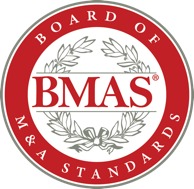“Don’t quit your day job.”
This is a common refrain in the M&A world, where people often find that they are responsible for working on a deal in addition to their regular job responsibilities. Indeed, staffing consistently represents a significant challenge for acquisitive organizations. In-house employees often lack experience in M&A, while it can also be difficult to find the right professionals to step in temporarily, for the duration of a deal. This month our Board members offered their advice on overcoming this problem.
 Many companies do not have the luxury of dedicating a team to M&A. In fact, most Subject Matter Experts want to be part of the strategy, planning and implementation of a deal, as the results of integration normally fall on the SME anyway. Most companies will not provide funding for extra help and most often, the extra help cannot complete the tasks quickly without leaning on your guidance. The following tips are provided to help you do a great job on M&A while maintaining excellence in your day job:
Many companies do not have the luxury of dedicating a team to M&A. In fact, most Subject Matter Experts want to be part of the strategy, planning and implementation of a deal, as the results of integration normally fall on the SME anyway. Most companies will not provide funding for extra help and most often, the extra help cannot complete the tasks quickly without leaning on your guidance. The following tips are provided to help you do a great job on M&A while maintaining excellence in your day job:
- Assign an internal project manager to develop and monitor the M&A execution plan – only work on items that are relevant for the target date;
- Solicit the help of someone on the team who would like to learn more about M&A – provide small chunks of work that can actually be productive and helpful;
- Break the day into pieces and focus on the time commitment for M&A and your job – don’t deviate your time commitment when possible;
- You will need to work extra hours – trust me if you don’t, the stress level will be high
- Celebrate when completed – you will have deserved it!
-Sue Rider, VP Global M&A Integration, World Fuel Services
 I have found a positive attitude and many volunteers from internal resources to help with an acquisition. Since many times these same people are critical to internal projects, it is necessary to provide them with supplemental external help that can work on the internal projects and free up, at least part time, the key resources needed to complete an acquisition.
I have found a positive attitude and many volunteers from internal resources to help with an acquisition. Since many times these same people are critical to internal projects, it is necessary to provide them with supplemental external help that can work on the internal projects and free up, at least part time, the key resources needed to complete an acquisition.
-Bill Blandford, Former Manager of M&A, Nokia

It is critical that a strong foundation be laid out for all resources, including:
- Understanding of deal rational, synergies to be gained, and timelines established for go to market. Most resources like to be a part of something “bigger” and having this understanding from the beginning creates a willingness to address resourcing challenges.
- A strong Integration leader who is dedicated to the program is key –this individual can help broker funding justifications for external resources.
- Strong executive sponsorship post deal closure to help prioritize against other projects already in flight with the same resources. This is especially critical in IT.
-Jennifer Lee, Vice President of Corporate Integration Office, McKesson Corporation
 Nurture your organization’s internal M&A capabilities with an eye to eliminating experience gaps. Your work stream leaders may be excellent at what they do, but they’ll face entirely different challenges during a deal. For example, your HR leaders likely won’t have conducted culture assessments of another organization to evaluate cultural fit and identify potential flashpoints. And your IT team might not have led a major data migration and integration project before.
Nurture your organization’s internal M&A capabilities with an eye to eliminating experience gaps. Your work stream leaders may be excellent at what they do, but they’ll face entirely different challenges during a deal. For example, your HR leaders likely won’t have conducted culture assessments of another organization to evaluate cultural fit and identify potential flashpoints. And your IT team might not have led a major data migration and integration project before.
These are experience gaps that you can certainly fill with the right M&A training, which doesn’t have to take a lot of time away from your team’s regular work responsibilities. Think about an intensive program like those offered by the M&A Leadership Council. Or if you have a larger group, you might even consider bringing experts in-house to lead a one- or two-day training tailored for your organization’s strategy, goals and challenges.
-Jim Jeffries, Chairman, M&A Leadership Council

